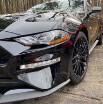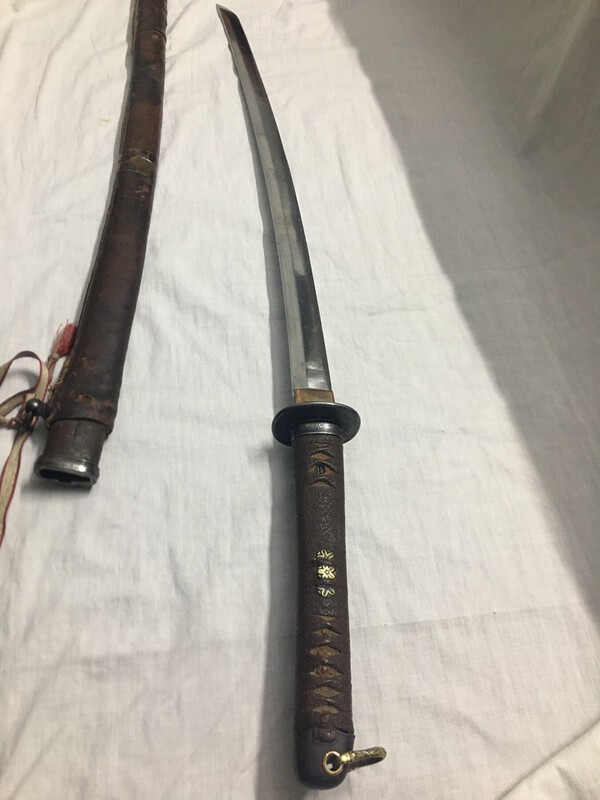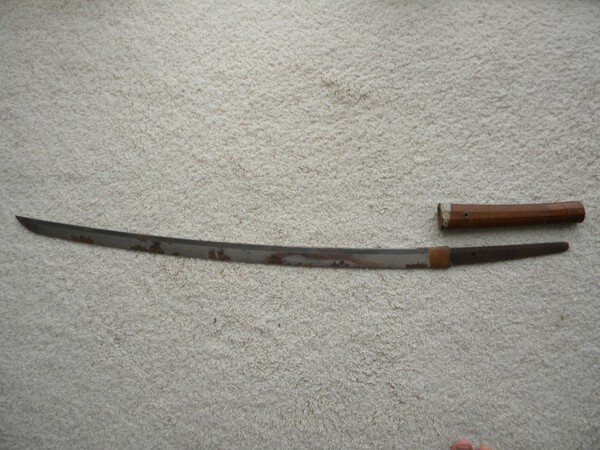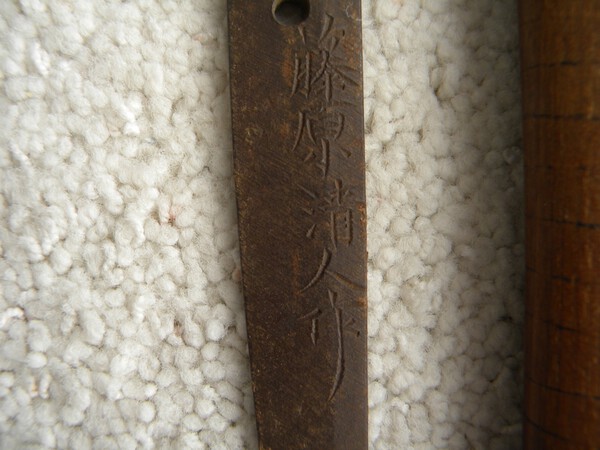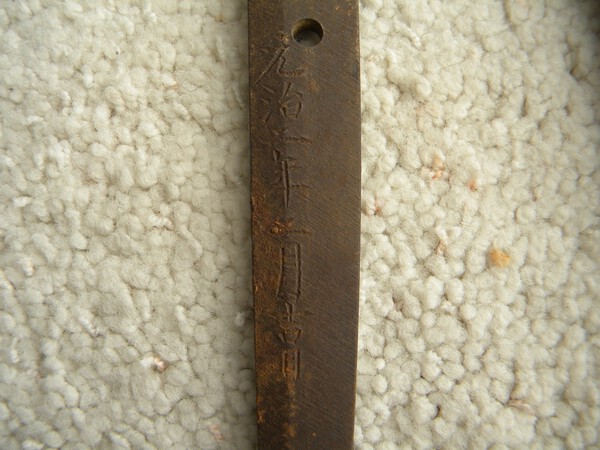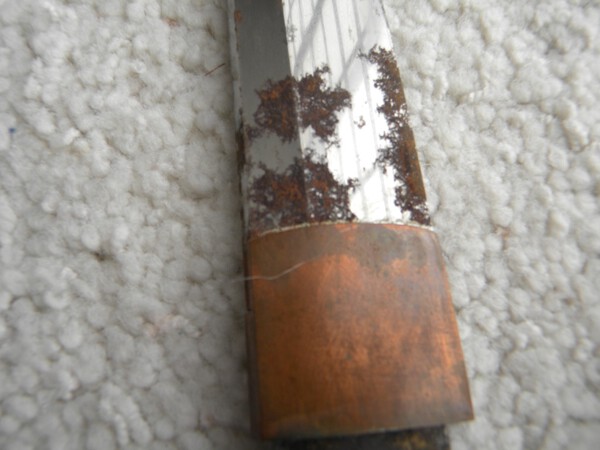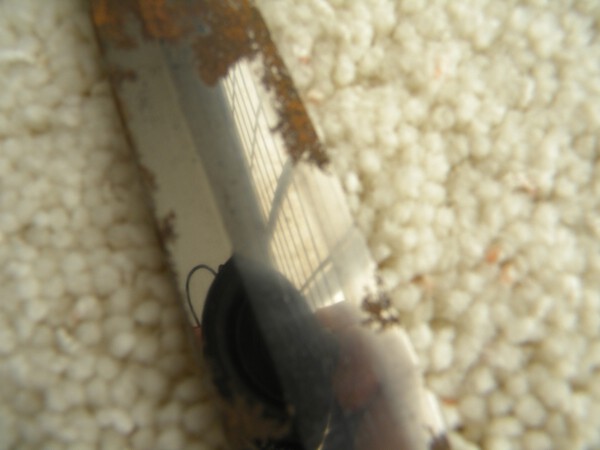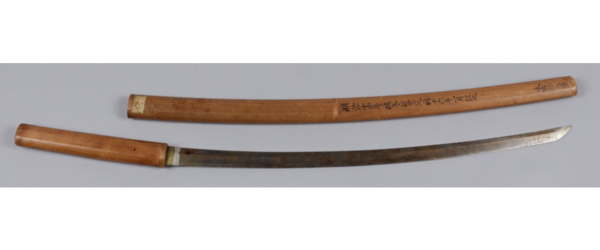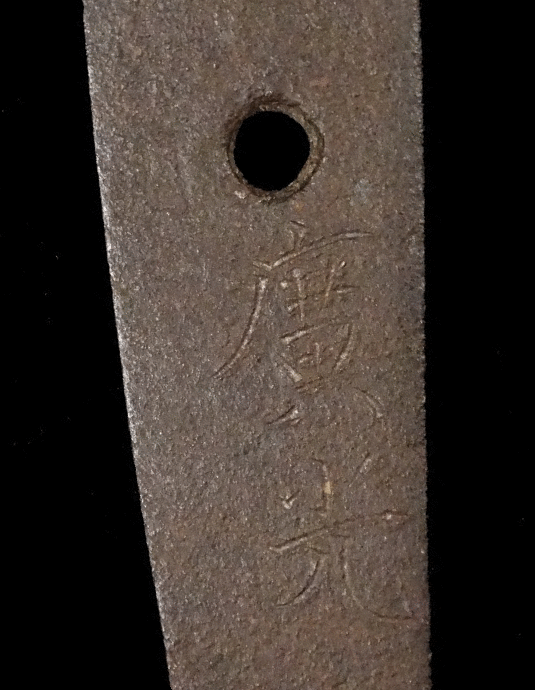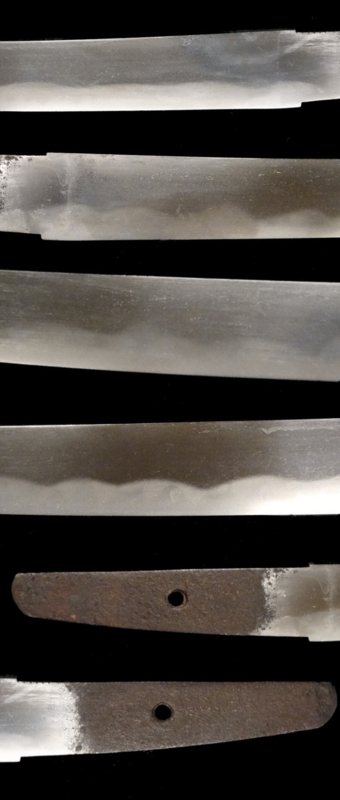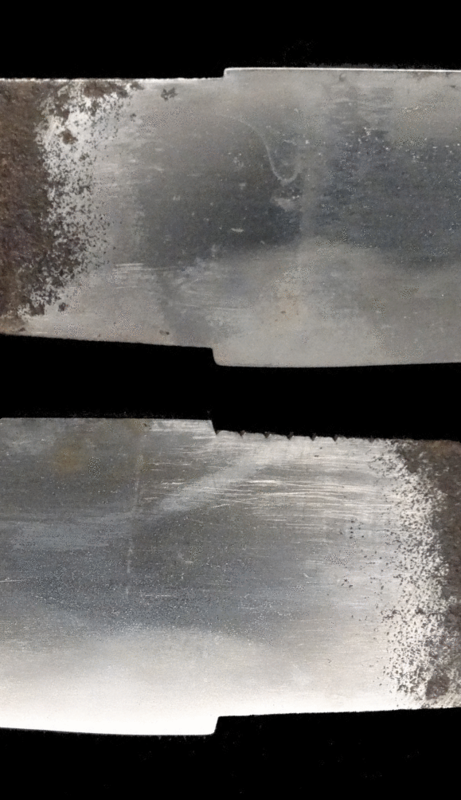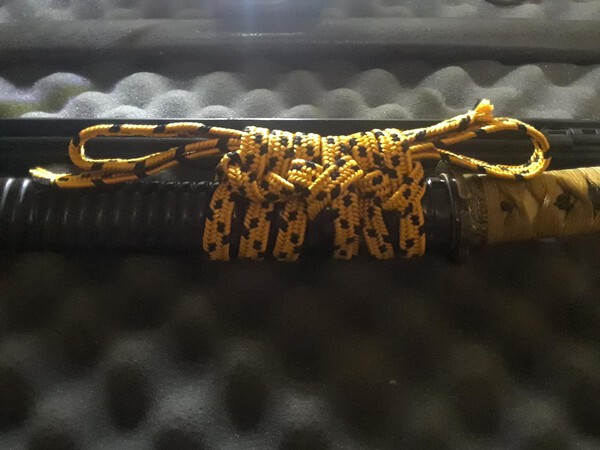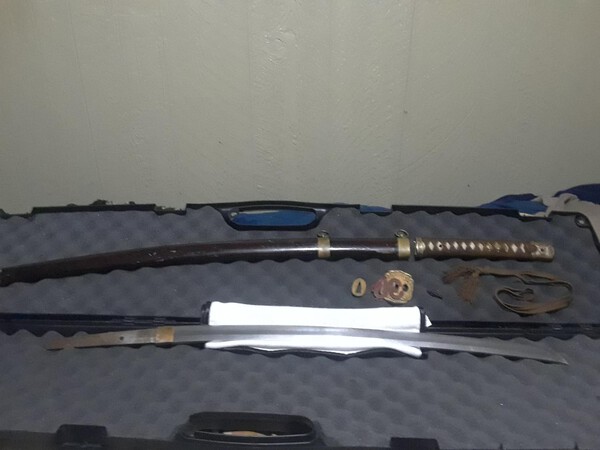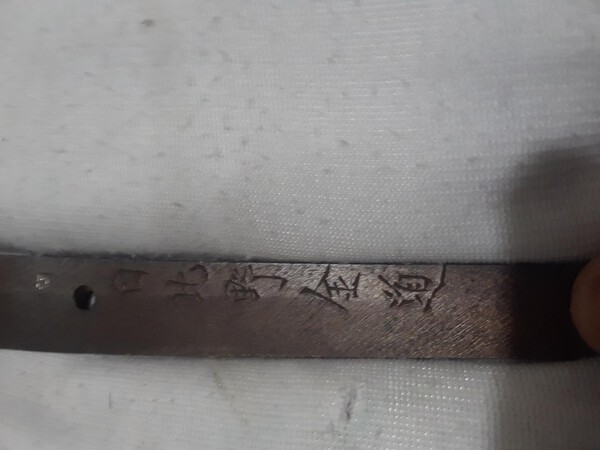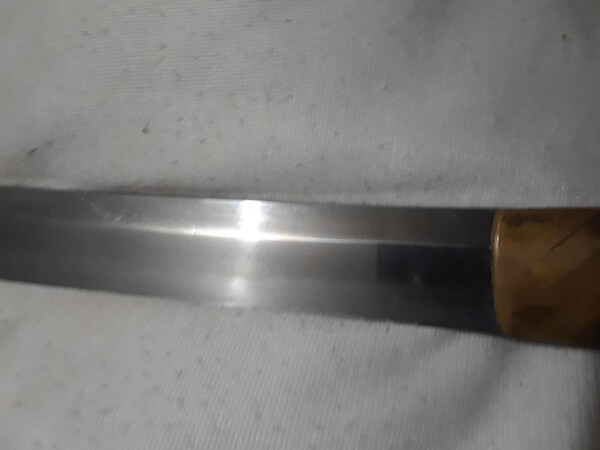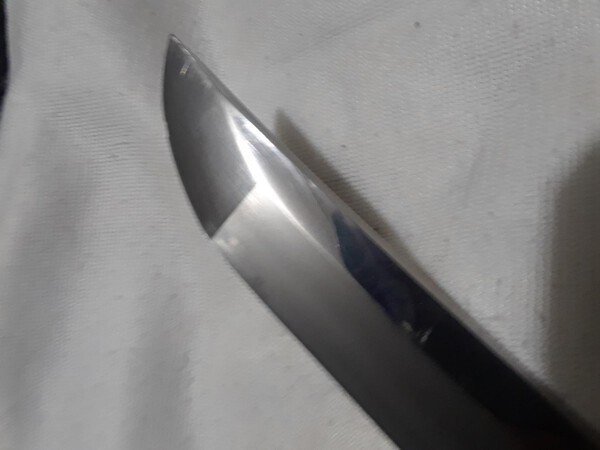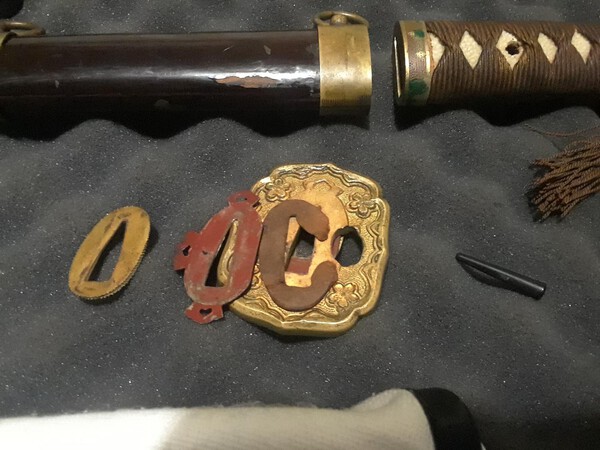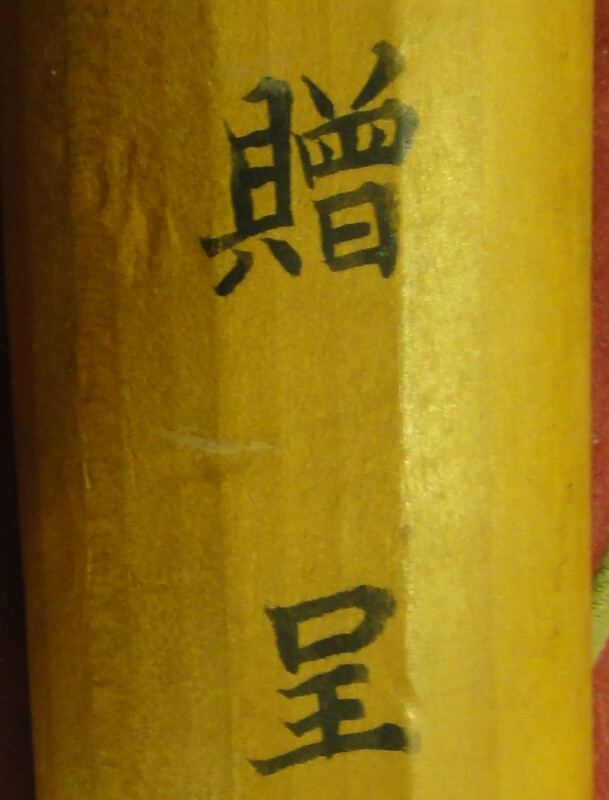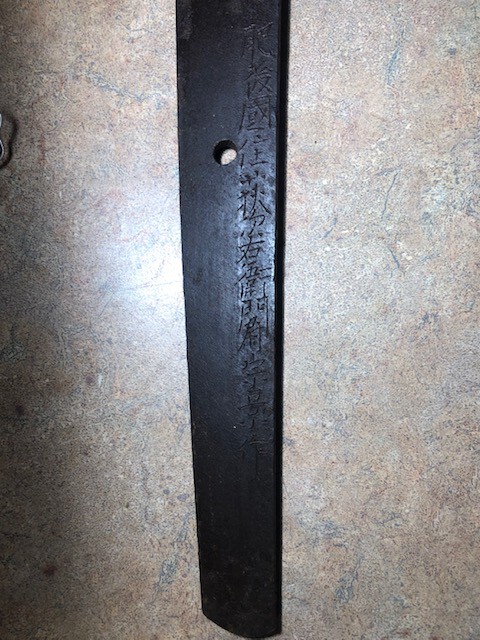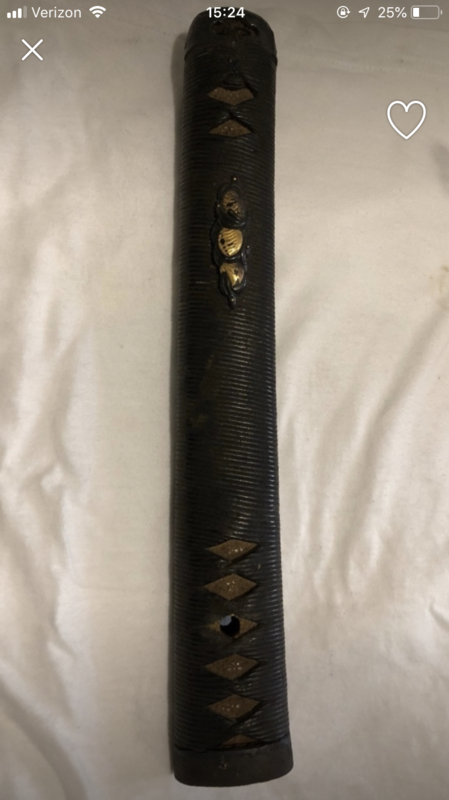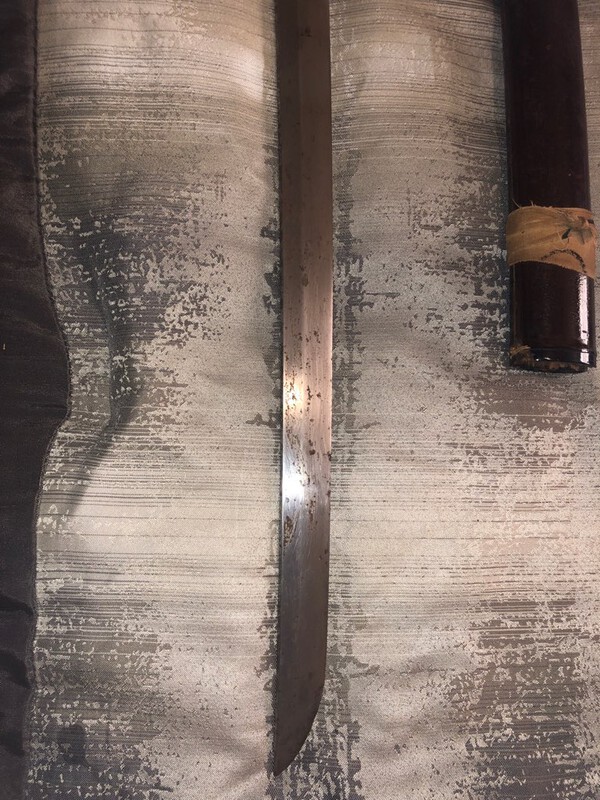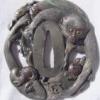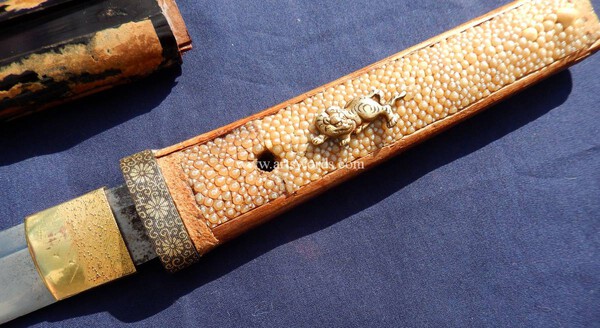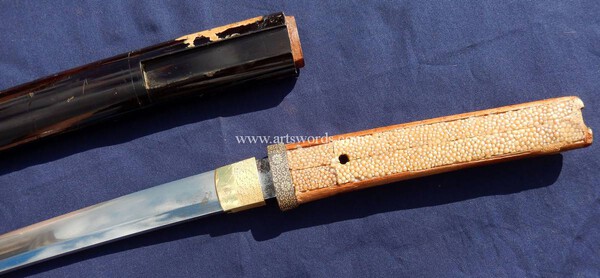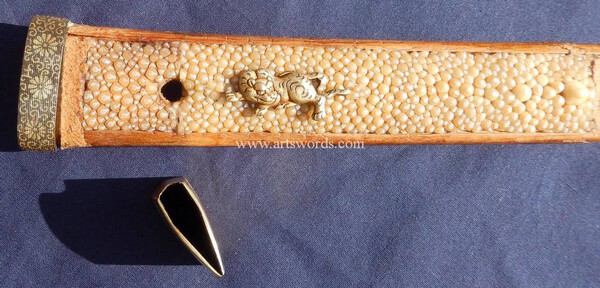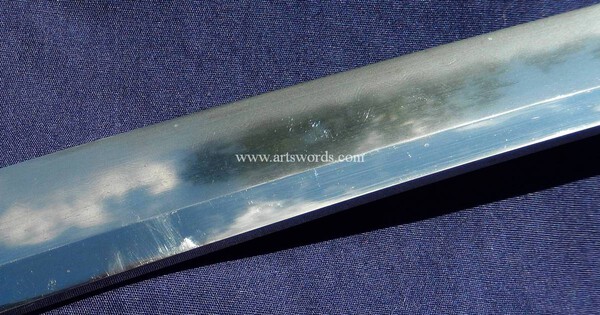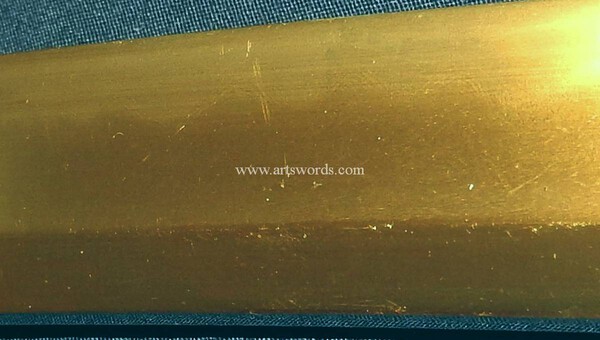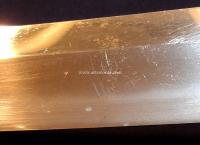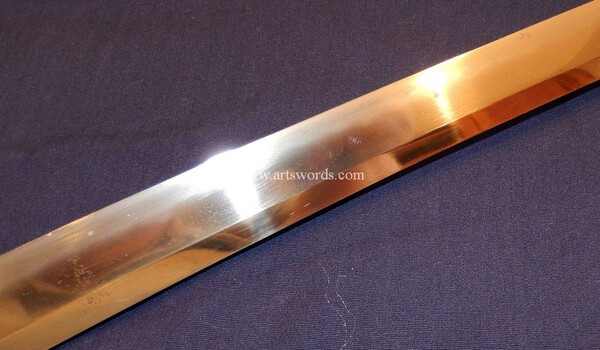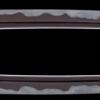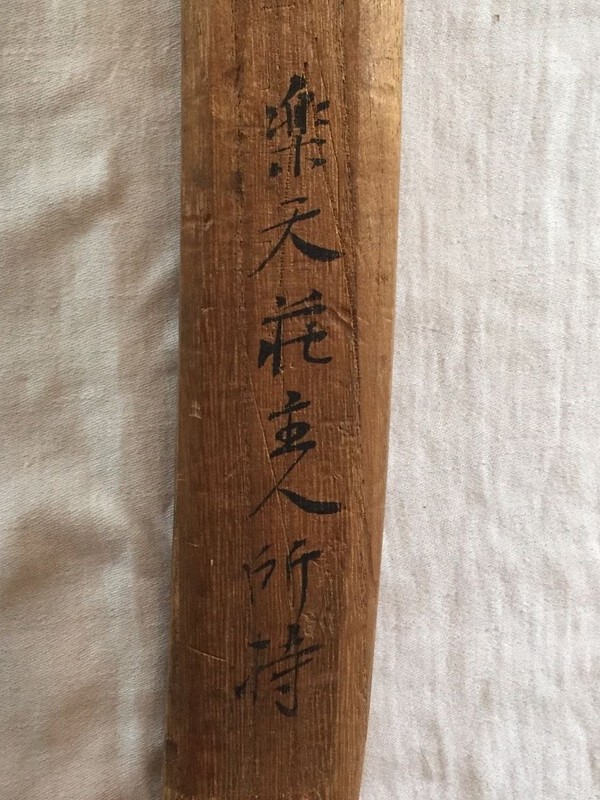Search the Community
Showing results for tags 'saya'.
-
I've been lurking on various dealer websites for the past 6 months looking for a nice yari in Koshirae. I see one on auction at AOI (link below) that made me curious about the proper length of saya compared to the blade. In this case, the blade plus Kerakubi is about 26 cm, and the saya (Koshirae) is 42 cm long. So the blade only runs up about half of the saya. I haven't handled enough yari in Koshirae to know how common this is, but in the dozen or so I've seen the saya is only slightly longer than the blade. https://www.aoijapan...ords-appraisal-club/
-
Hello everyone i was wondering does anyone has any suggestions for shirasaya makers in the UK because I don’t really want to send my sword out of the country because of our weird laws. I see people recommending someone called Mike Hickman Smith and I just wanted to know if anyone had any experience with him, pictures would be greatly appreciated. I also seem to be having a hard time contacting him so does anyone have any contact details? Bill
-
I bought this navel sword about a year ago at a local antique store. It has an engraved tag glued to the saya. When I first saw it, I assumed it was just something that a former owner attached because he thought it sounded cool. I realize this is just wishful thinking on my part, but I wondered if it was more important than that. I was thinking that it could have been possible that this sword could have been a batch of swords that the US navy presented to dignitaries and higher ranking officers on the day of the signing of the surrender on the Missouri. The date is wrong and it was installed "upside-down" the way westerns would have mounted a sword. But I'm sure the navel officer in charge of this project could have screwed that up on his own. So my question; is it possible that the US Navy could have taken a batch (20? to 50?) surrendered Japanese swords and presented them to people present at the signing of the surrender on Sept 2nd, 1945? Has anyone heard of such a thing, or am I just wanting to believe it's true? Thanks, Phil
-
Hello. I recently showcased what I thought was a Ken, due to one appraisal, however this may be incorrect as was pointed out by several members of this forum, and as such I am going to say that it is an odd kaiken, and assume that it is most likely Edo Period, due to the design of the habaki which is copper, wrapped in silver. This piece is very small, with the entire length being 8.2cm, though does look quite nice for its size, at least in my opinion. It is in shirasaya, and has a suguha hamon. It is mumei. It also appears to have had some material removed in the past, most likely to mitigate rust pitting. The blade is tired, though has no active rust, from what I can tell. It is not papered. It is quite an interesting piece, though I do not expect to get much for it. I do not have a set price for it, so please feel free to send me offers of what you think it would be worth. I would prefer a trade over a sale, however. I hope to get at least $200 for it. Images: https://imgur.io/a/PeNGViN Will ship to anywhere. Payment can be done through PayPal. Currency is USD.
-
Hello. This is my first post here, so I thought I would start by showing off my most recent acquisition. This is a small ken. It is double edged with a suguha hamon, and is unfortunately mumei. The blade is quite tired, as you will see in the following images, though does still retain quite a nice polish. The habaki is copper, wrapped in silver, and may not be original. The entire piece is in shirasaya, which does appear to be rather old as well. Judging by the appearance of the blade and nakago, as well as some consultation with an expert, this small ken may be from the Nanboku-chō to early Muromachi Period, though I am not certain. What are your thoughts? I may end up putting it up for trade eventually. Imgur link, due to the files being too large: https://imgur.io/a/PeNGViN
-
I know that the sayagaki typically has the mei, dimensions, and the appraiser/owner but mine doesn't seem to line up with the nakago so I don't believe it has the mei, and was curious on what it does have. I took a shot at it with google translate with no luck. Any help would be appreciated!
-
The sun-nobi tanto I just received arrived without a shirasaya. It does have a fairly nice koshirae. When I asked about having a shirasaya made while the blade was still in Japan, the vendor stated it already had one, but alas, it arrived dressed in its koshirae. So now I have a blade in need of a shirasaya, and I live in Canada. What is my best option for having one made? Thanks for any input you can provide.
-
My Nisei dad and mom received this gift from her father when they were married in Japan after WW2. My grandfather was sensei and had his own kendo dojo. We lived in Japan for 2 years in the early 1960’s when my dad was stationed in Korea with the 25th infantry division. I was in junior high school at that time. We visited my grandfather during the summers and he came to visit us in Tokyo several times. The katana was kept at my uncle’s home in Hawaii down in their garage. What you see in the pictures is it’s condition after my dad retrieved it in the 1980’s. Termites destroyed the wood Saya and the Tsuka is what’s left. My mom is now 92 and we are thinking about what to do with the katana. I think we would like to try and bring it back to the condition it was; when it was gifted. We would like to find out how to do this and what it would cost. I believe we will keep the legacy in the family. Comments and any other thoughts would be appreciated. I am not well informed on these matters. We have two other katana. One that my dad won in a kendo tournament in Hawaii when he was in high school. Another that my dad brought back from the Philippines. He was stationed there in MIS under General MacArthur during WW2. These are still in excellent condition as they were always kept here. Thanks. - RayM
-
Hey everyone, I'm working at a small museum in New Zealand where we have a collection of Japanese swords. I'm currently cataloguing a katana in its wooden saya that has kanji I'm hoping to get translated; the maker, date and location of manufacture, the class of blade if possible, and any other details noted. We've had some rough translations done by a Japanese local so we've been working off those thus far. I think we've narrowed down the appraisal to the Honami family during the Meiji period (1881 or 1883?) but I can't quite pinpoint which member specifically, possibly Chou Shoku or Kochu? We believe it was sold for 150 pieces of gold and the blade length is around 70.902cm. We also think the maker might have been born in Okayama, possibly the western region, within the Kamakura era (1192-1336), with the manufacture date around the late 1240s? These names came up in the translations but I haven't been able to ascertain who or what they are and how they fit into the blade's history: Kaneyasu Tamefusa Norifusa (this is written on the sticker presumably added by past museum staff) Katayama Norifusa Katayama ichimonji Any help translating/reading the kanji would be appreciated, thank you! Sarah
- 16 replies
-
Help translating katana kanji needed (for another set!)
Eve posted a topic in Translation Assistance
Hi everyone, I have another katana and saya with kanji I need translated... I'm pretty sure the saya says 'Kanefusa' but I can't work out the two on the pommel. Any help appreciated! Sarah -
Hi sorry if this is the wrong section to post this request. I have a lacquered saya that is starting to part at the joint seam and I would like to have it restored but as I am very new to collecting nihonto I do not have any contacts .So if possible I would like recommendations please. Bryan
-
I see that there's a shirasaya section in the annual sword making competition. As far as I know they're plain, not lacquered, simple, made of 10 year old magnolia wood. Not much room in the way of creativity. I guess it's about quality of fit?
-
I am relatively new to this platform, please forgive me if I do something wrong I have questions about a few different things, but I don't think they deserve their own topic seperately. Here are my questions: What are sheath menuki called? menuki and other unsusual hardware on sheaths is mostly something i see on emishi, ainu and mainland asian swords. On google images I've seen two shoto, and one daito, with what looks like a normal sized menuki on the sheath. On emishi swords, menuki on the handle and saya are very big ususally. Im bot referring to a larger kojiri or kaeri tsuno, it is usually placed in between them on the saya (I dont know if there is only one on the omote usually or if it is on both sides) I also see a lot of rings on emishi swords. Like one you might see on a jokoto era swords and old tachi from both Japan and Korea, to attach a tenuki tassel to. But instead of just one, several of them in a row. This brings me to my last questions On old tachi, especially those without ito or with a stingray only wrap, one might see several small ornaments in a row, not centered. Thanks!
-
Hi, I'm a beginner at collecting and I'm planning to purchase my first nihonto. I found a tanto in shirosaya that I really like from a trusted seller, but since I don't have much experience, it would be useful to know what everyone thinks about it before I buy it. Specifically, do you see any fatal damages or anything unusual? Are there any signs that it could be gimei? Anything notable that might raise or lower its value? And what price range should I be paying for it? The seller listed $1500 but is open to negotiation, so what would you suggest as the lowest reasonable price?
-
Hey guys! You'll probably be able to point out the flaws in it. I can tell that the ends are a bit off center, but this is my first attempt at sageo tying; so I thought I'd share it with you all! This is on a wakizashi that I bought from a guy here and I replaced the tsuba with something I felt fit the piece better. Obviously the sageo's coloring is off for this, but its the closest I could find. I am still fairly proud of it (maybe my boy scout days are paying off, maybe not), though I am sure I'll look back on it years from now and shake my head.
-
This is a blade I haven't shown before, its also my first proper gunto/katana. I've had it sitting a while in a glass case with some other important blades of mine and I only get them out to inspect/change their oils. (Much like a garaged classic car) I do not know who signed it or from what arsenal its from. It does have a hamon, though its difficult to see. Geometry is intact, but it has several nail catchers along the length of the blade. Nothing that wouldn't come out with a fresh polish and thankfully there are not any hagire that I can detect. The tsukamaki is definitely silk and it has rather nice quality ray underneath. There is a number inside the tsuka (2 for those that care to know) and there is what appears to be an '8' stamped on the obverse side of the nakago. On the mei side, there is also what appears to be a tiny plus ( + ) at the very end of the nakago. I have been unable to find any other numbers/markings on the blade or parts. It does have the remnants of a leather washer of some kind. I am unsure if the saya is original though it definitely has consistent age with the rest of it. The portopee is definitely not original, its just one I found to display with it. The meguki is not original either, but a nice piece of dark wood that fits nicely (could be horn?) One last quirk to note is that I am unable to remove the habaki, it seems firmly stuck on and I'd rather not risk damage just to remove it. Anyways, I just wanted to show this one. I started my collection of katana with it and its my second nihonto (my first is a scraggly wak that is likely beyond saving). I'd love to know who made it and from where it originates, and if it belongs to a possible school/manufactory. *Bonus picture of my blades in the fancy wall-case I have included. Pardon my mess with the stuff in the bottom!
- 14 replies
-
- translation
- gunto
-
(and 2 more)
Tagged with:
-
Dear All I am working at translating on the shirasaya of a blade signed Yasunori 靖憲 and the blade is dated Showa ju ni nen san gatsu kichi hi 昭和十二年三月吉日 On the shirasaya there is 贈呈 Zōtei (presentation) And then 帝國在郷軍入会久留米市聯合分会 Teikoku zaikyō gun nyūkai kurume shi rengō bunkai Maybe??? The sword was presented by the imperial republic forces admission to Kurume (久留米) city union chapter. Any thoughts, comments or corrections. Later david
-
Hello everyone, i have a few quick questions, first off how old is this sword? second off what is the type of wrapping is the handle and third, is this a samurai sword or for military use. also the price is $700 is this a good price for this sword. I am not sure on the value nor the age on this or the translation. any help would be greatly appreciated thank you.
- 6 replies
-
- gunto
- translation
-
(and 2 more)
Tagged with:
-
Hi All, Up for sale is this shinto period wakizashi by Gassan. It has really nice ayasugi hada which was very difficult to photograph. I think this is the Gassan that worked in about 1624 and was from Owari and also worked under name Nobutaka. It has a nice 2 kanji signature Gassan. The cutting edge of the blade is 21 inches long. It has a wonderful fuchi and one really nice menuki. This is exactly as I got it and just have too many projects in the pipeline so I am selling it so someone else can polish it. I can arrange a nice polish for about $800 for the new owner. I can also arrange for the restoration of the fittings. As I said the ayasugi hada was difficult to photograph but you can see it very clear in hand! $3700 plus shipping and paypal if aplicable. Thanks for looking and if you have any questions please dont hesitate to msg me though this site or email me at brannow_NO_SPAM@artswords.com Please remove the _NO_SPAM from the email address. Bill Rannow www.artswords.com
-
Greetings all, I translated most of the sayagaki but the name of the person who made the attribution is too much for me. Please help!!!!! Thanks,Tom M.

